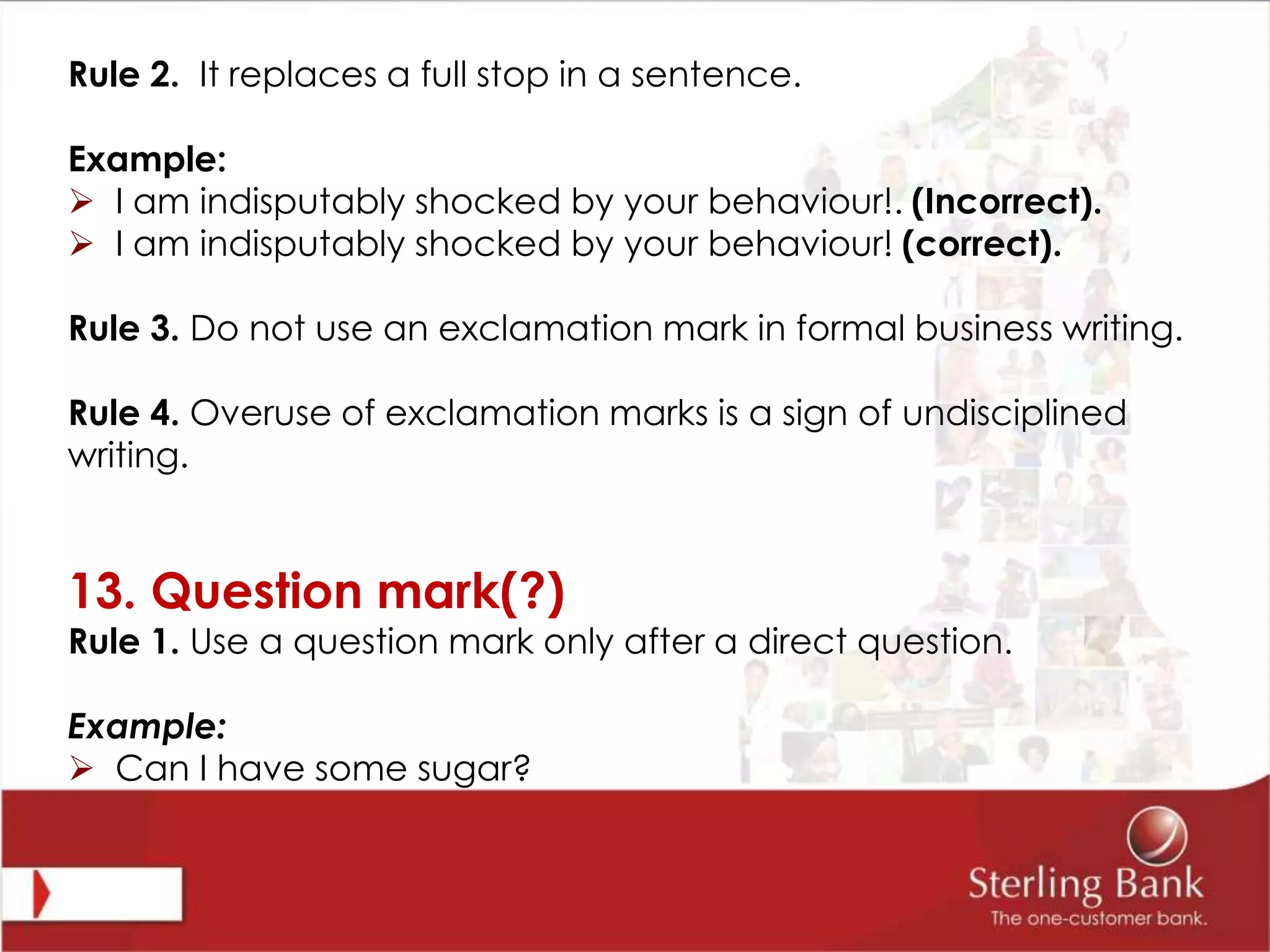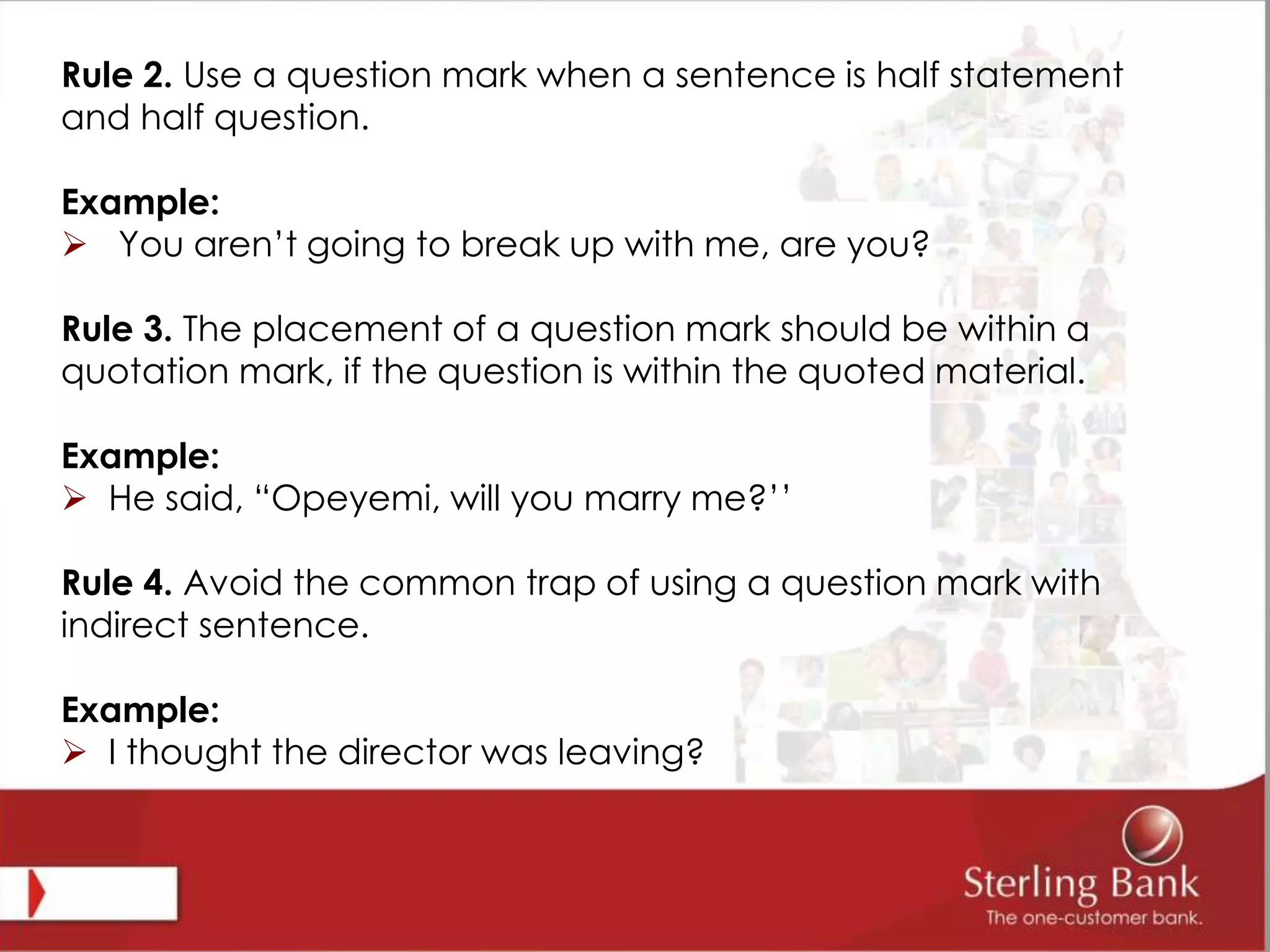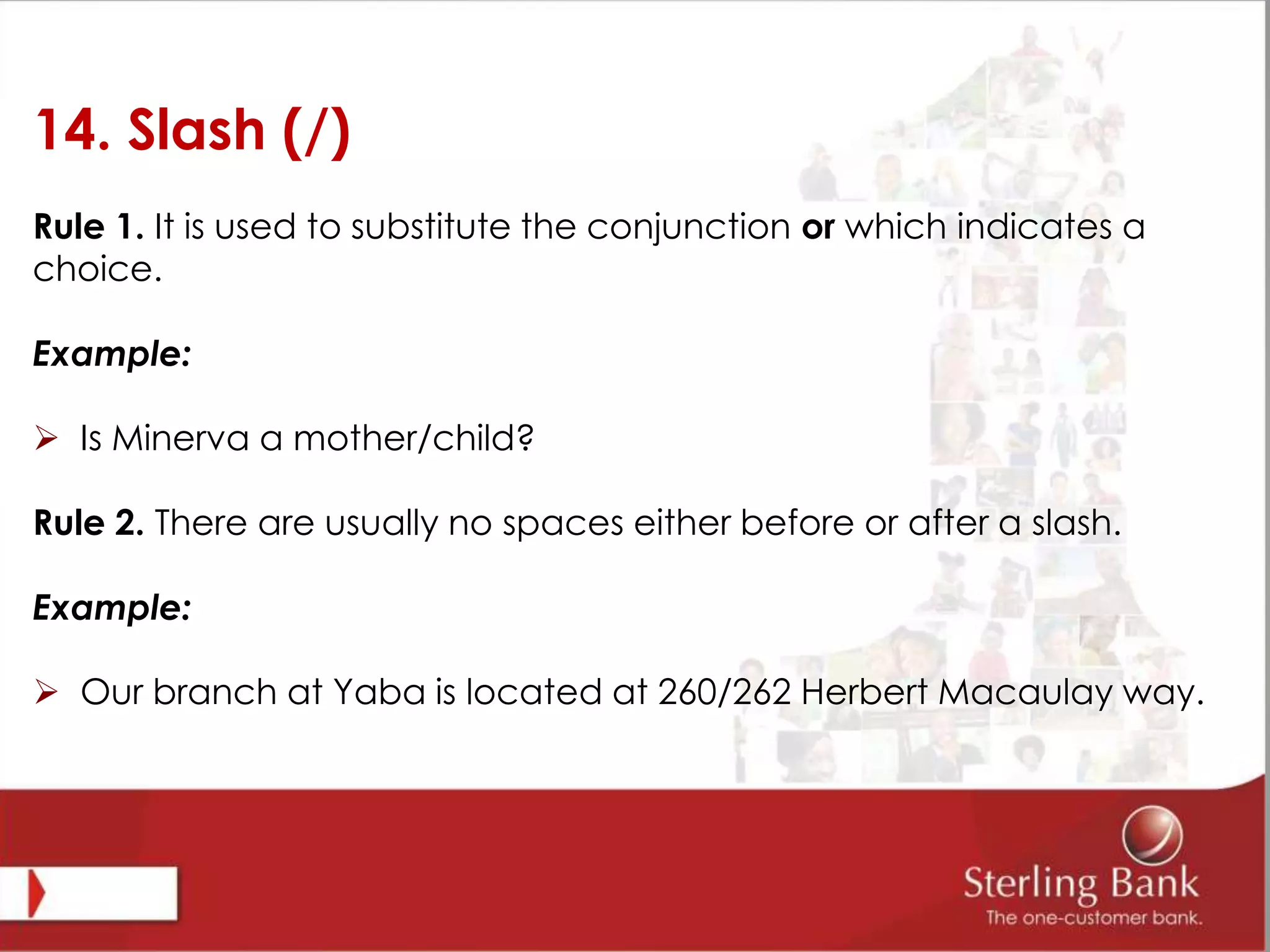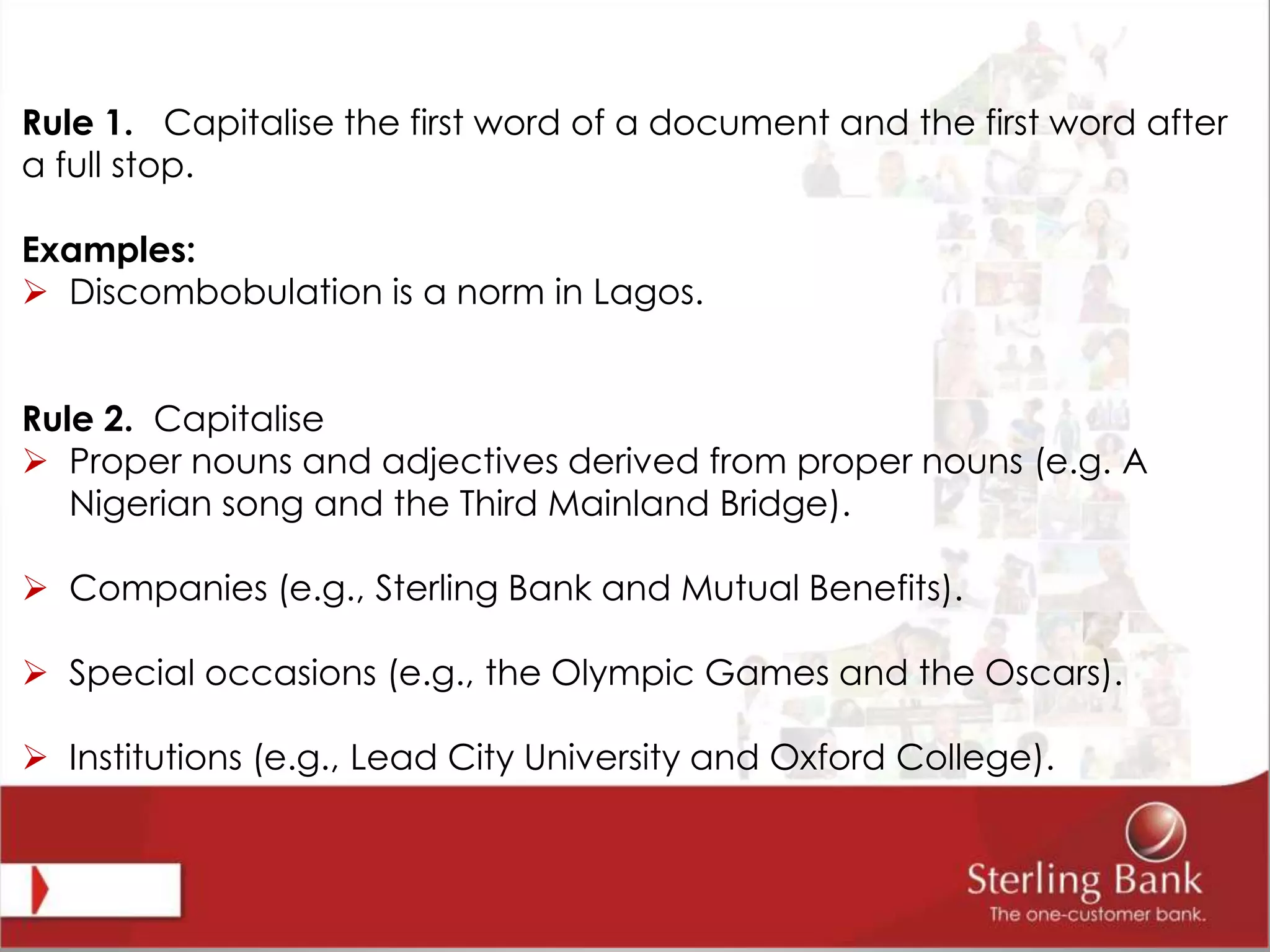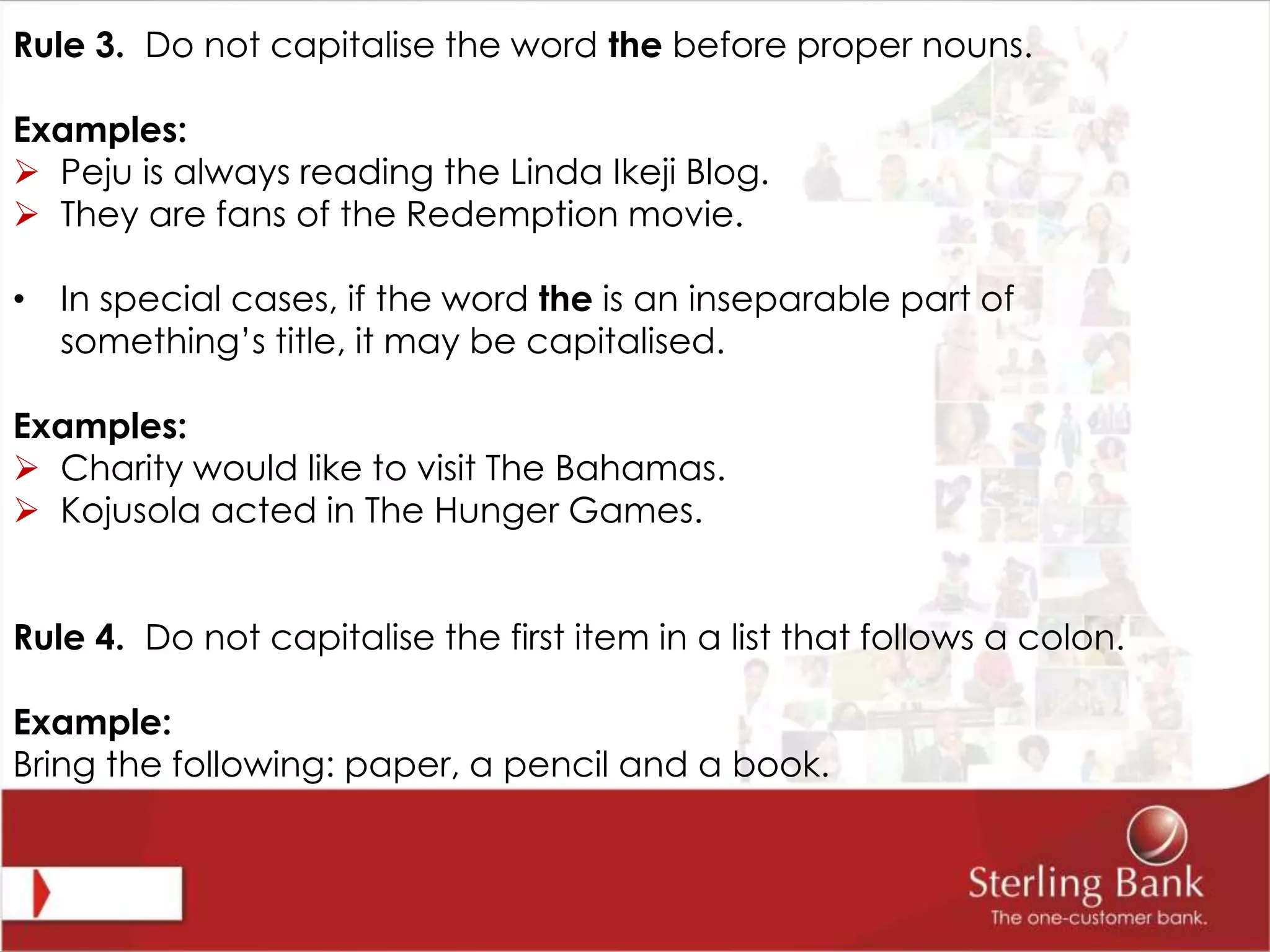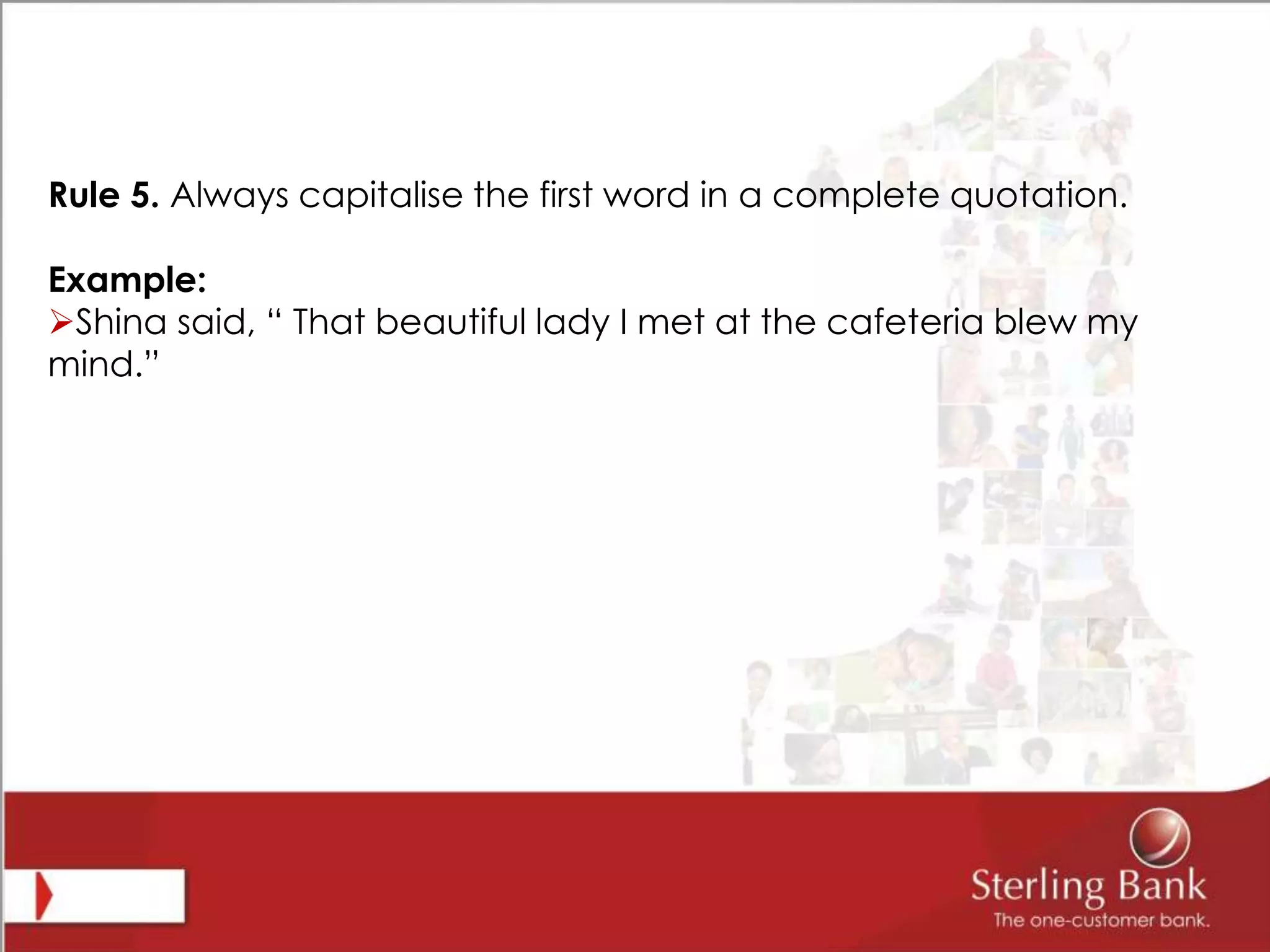The document provides guidelines for proper use of punctuation marks and capitalization in English grammar. It discusses rules for full stops, commas, semicolons, colons, quotation marks, parentheses, brackets, apostrophes, hyphens, ellipses, dashes, exclamation marks, question marks, and slashes. It also covers when to capitalize words, noting that proper nouns, institutions, and special occasions should be capitalized but common nouns should not. The document aims to clearly explain punctuation and capitalization for producing formal written English.
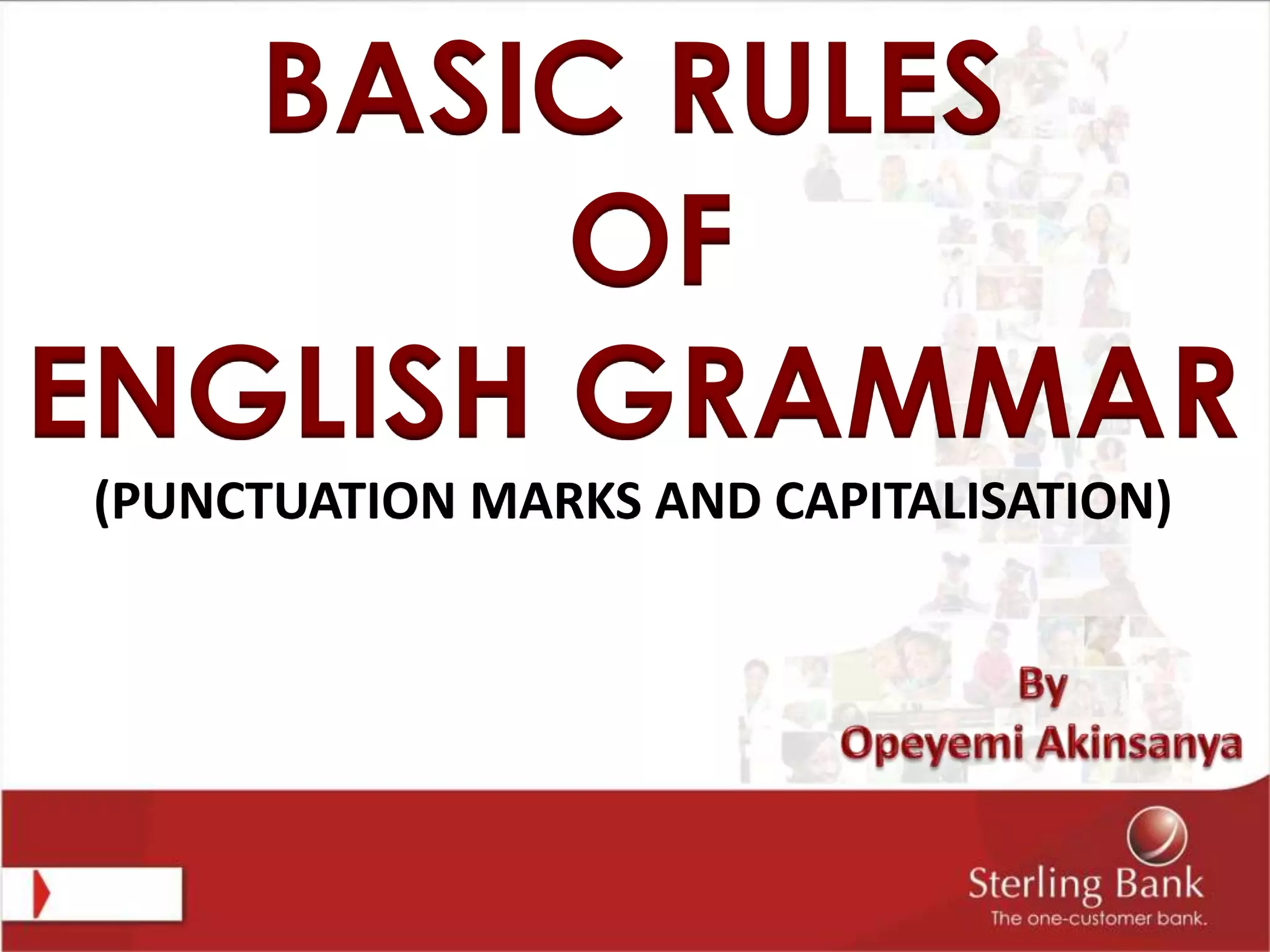
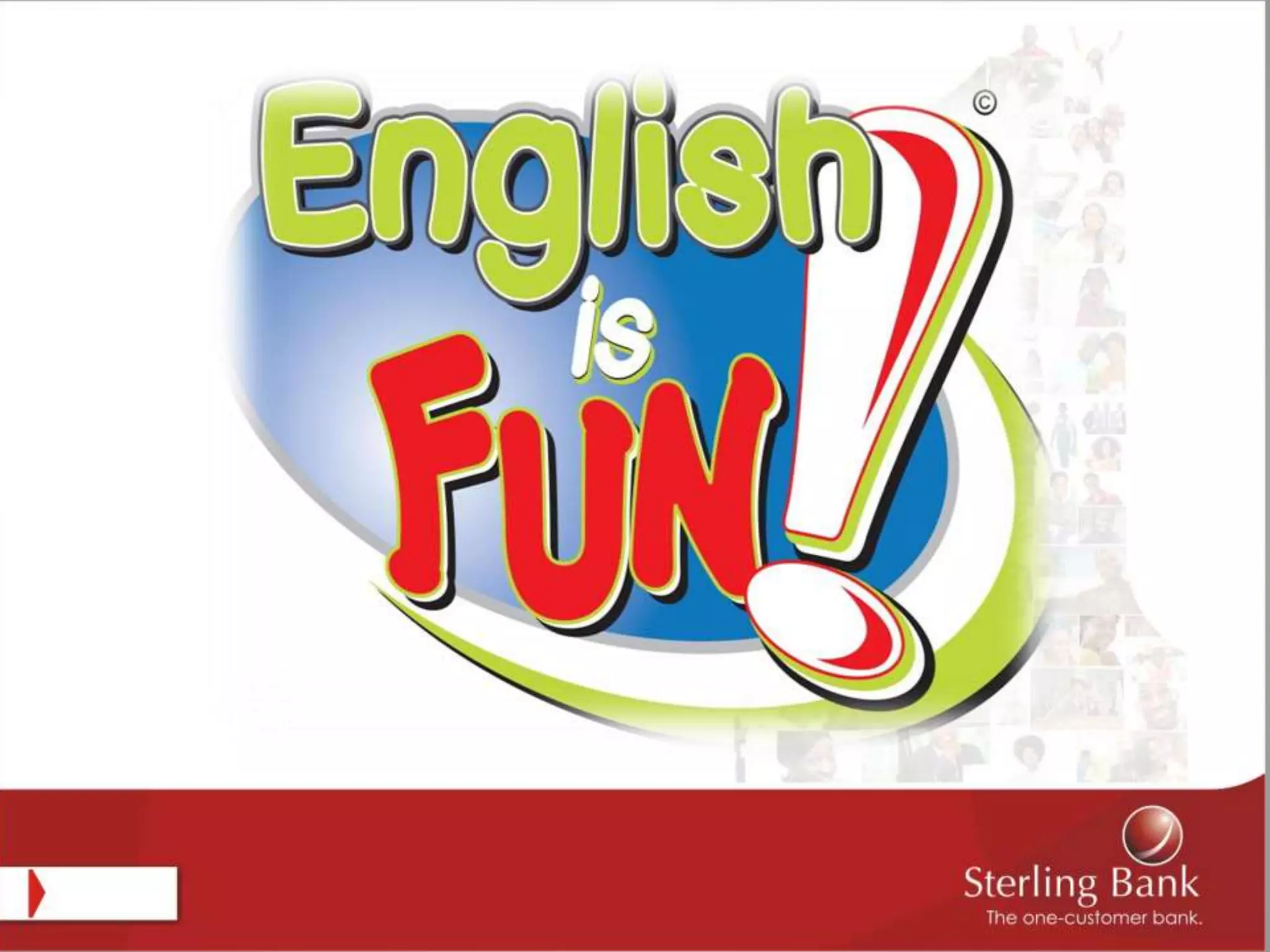

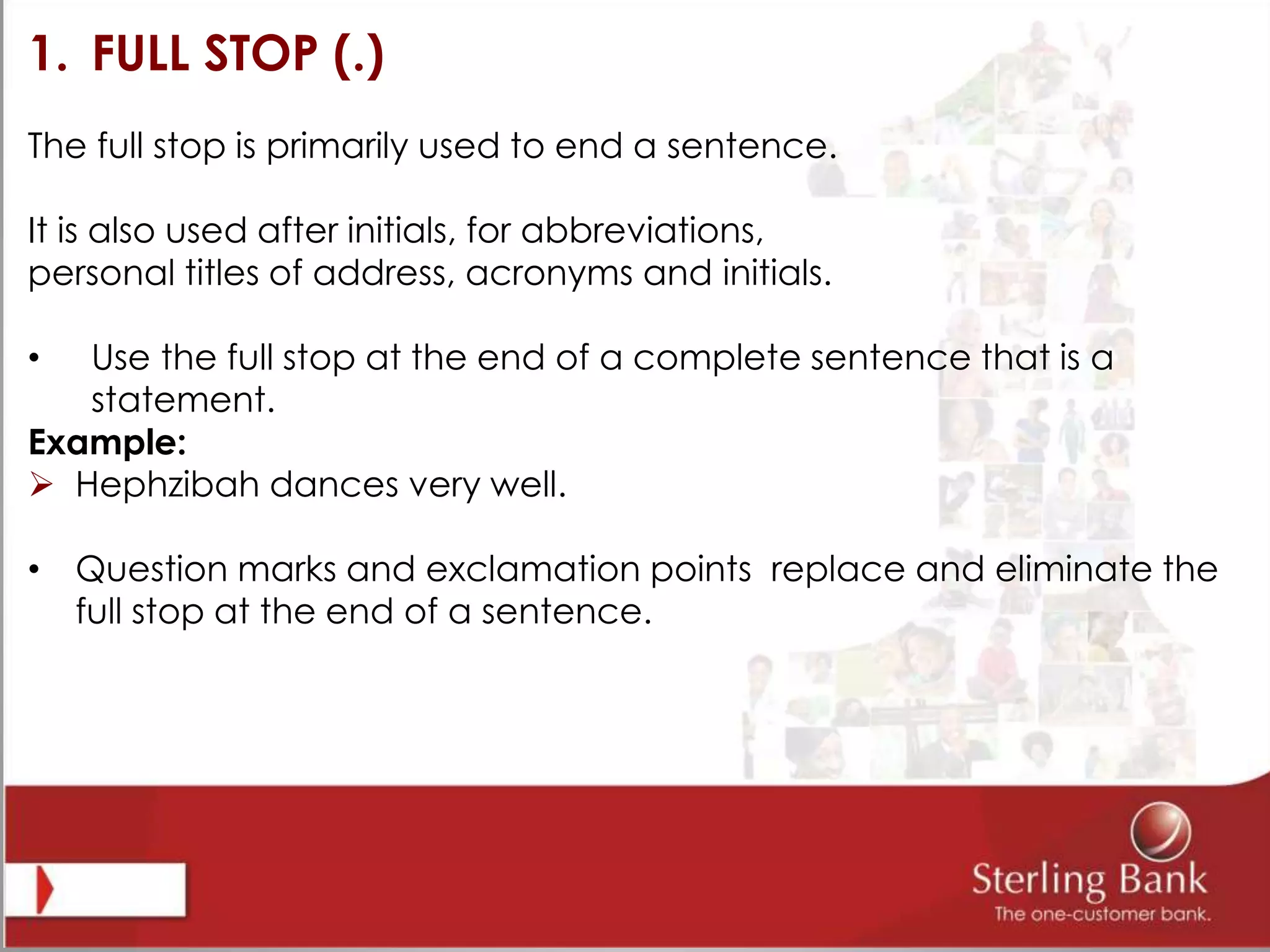
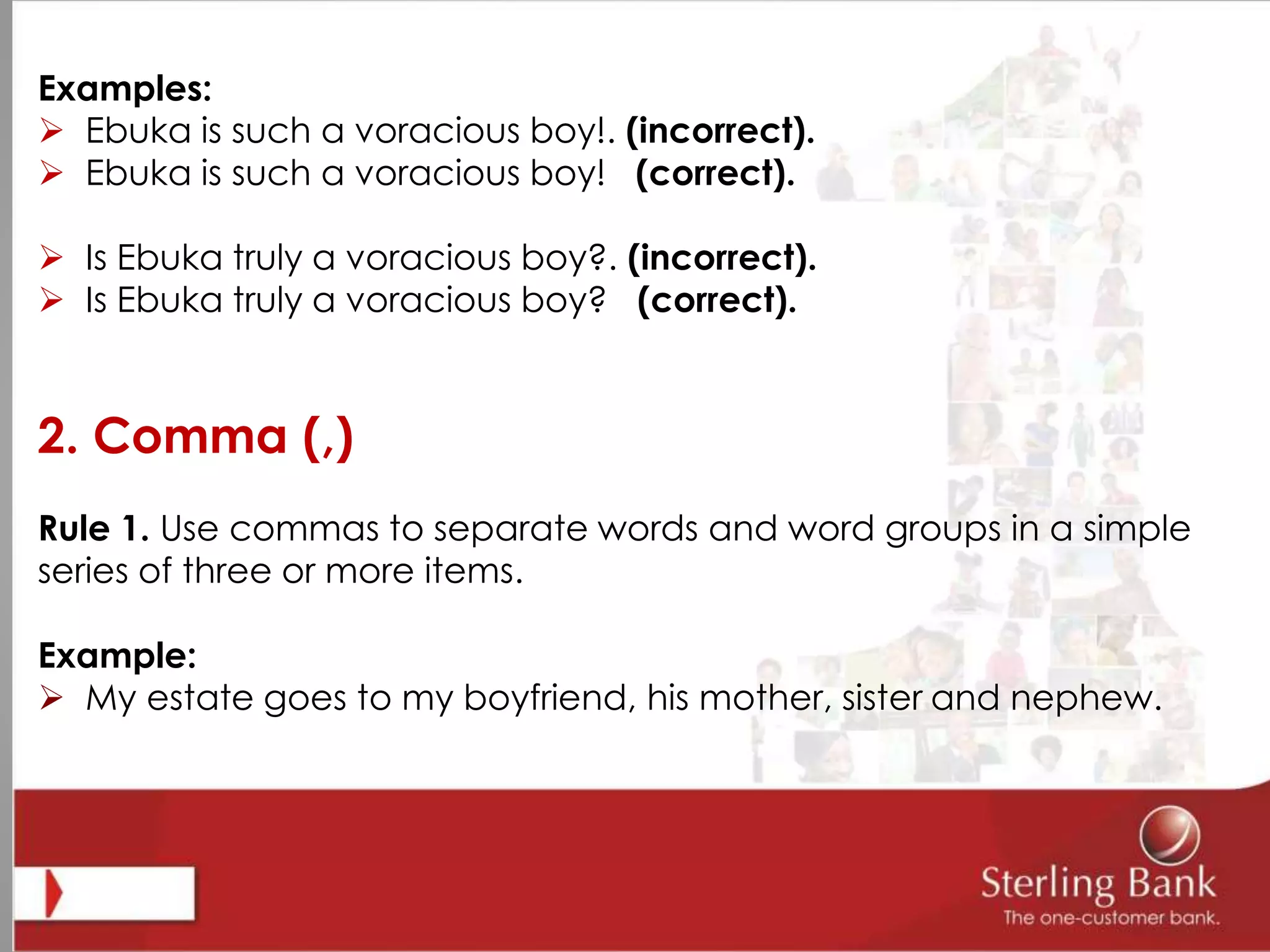
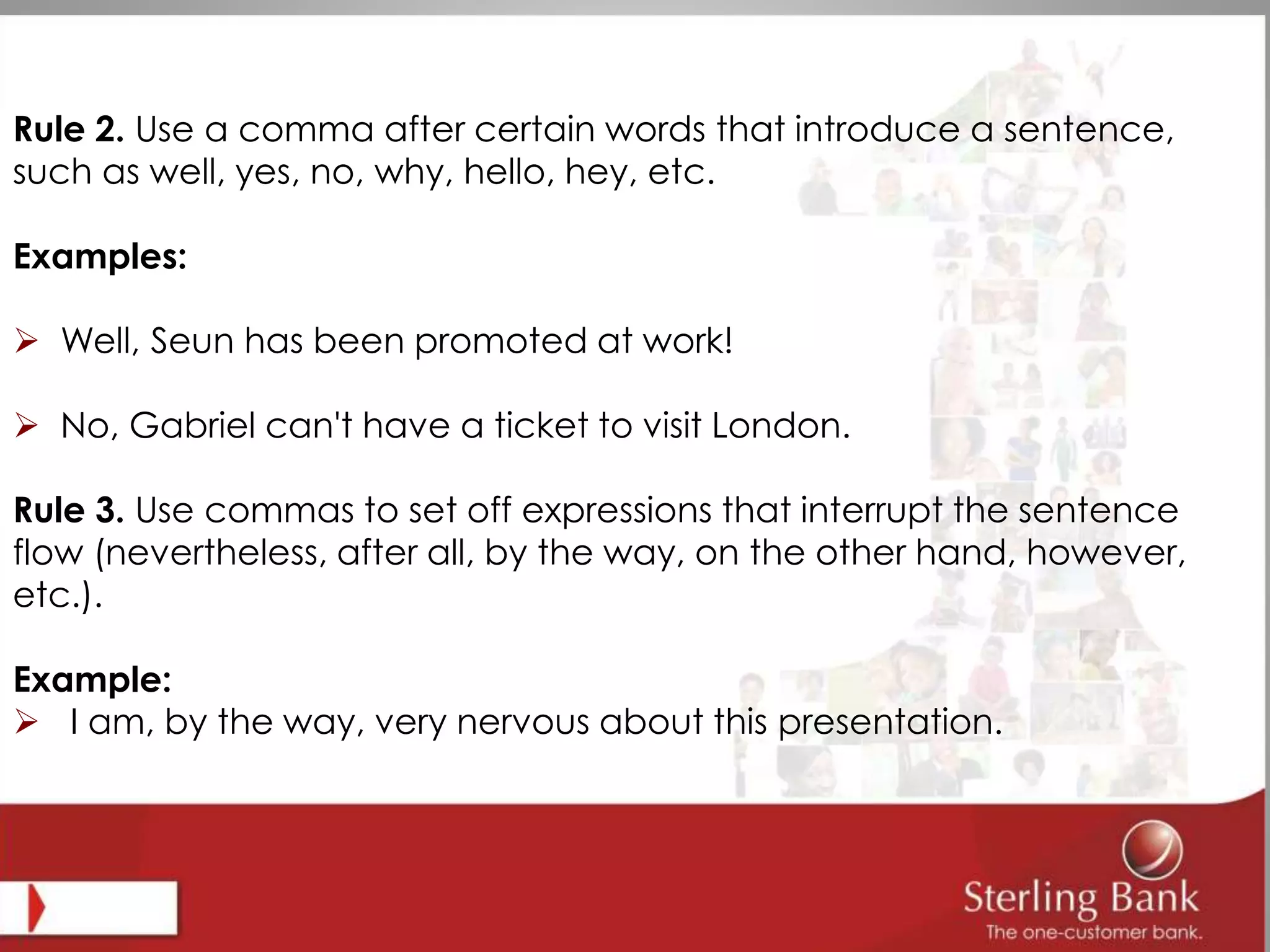
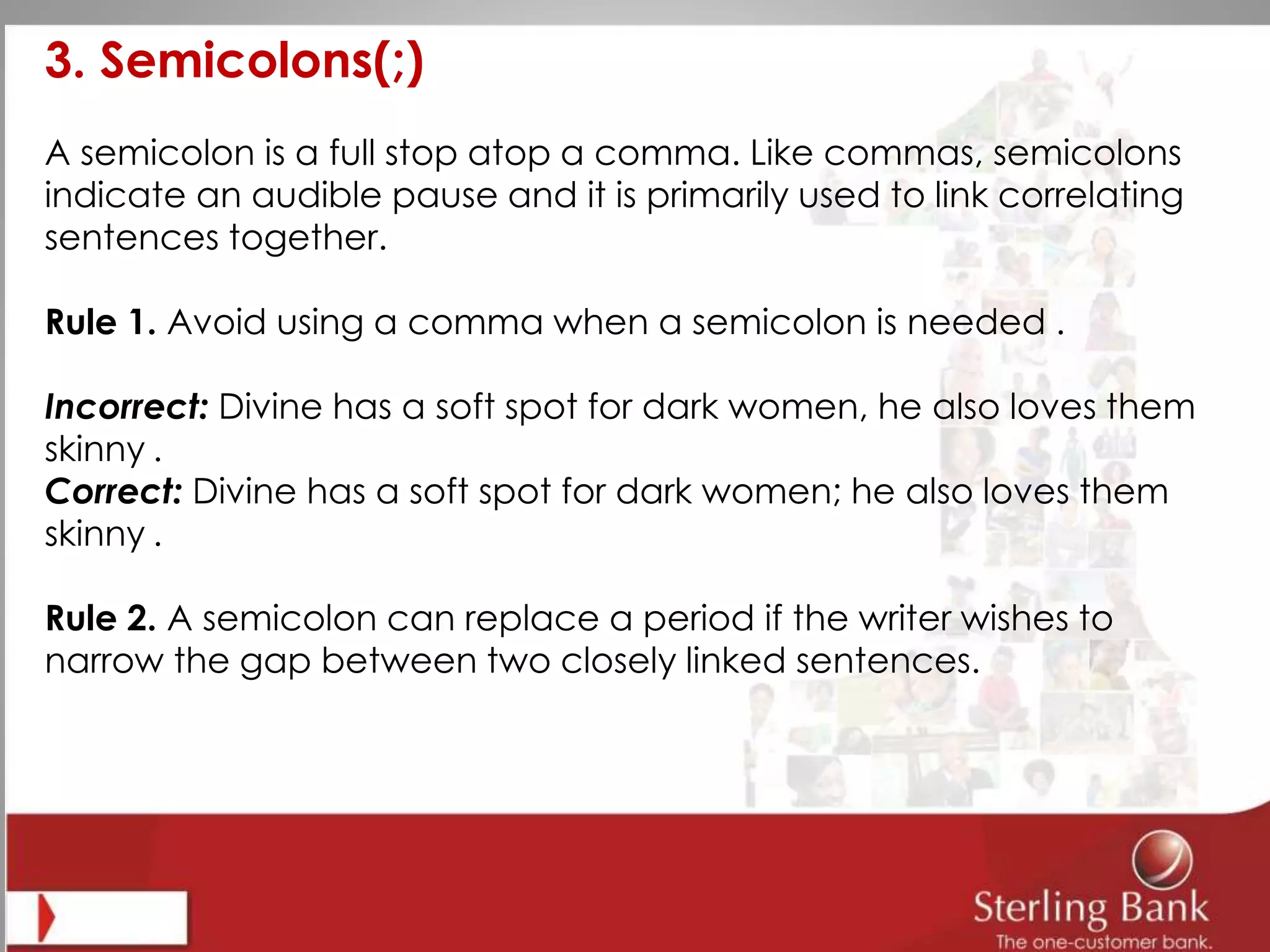
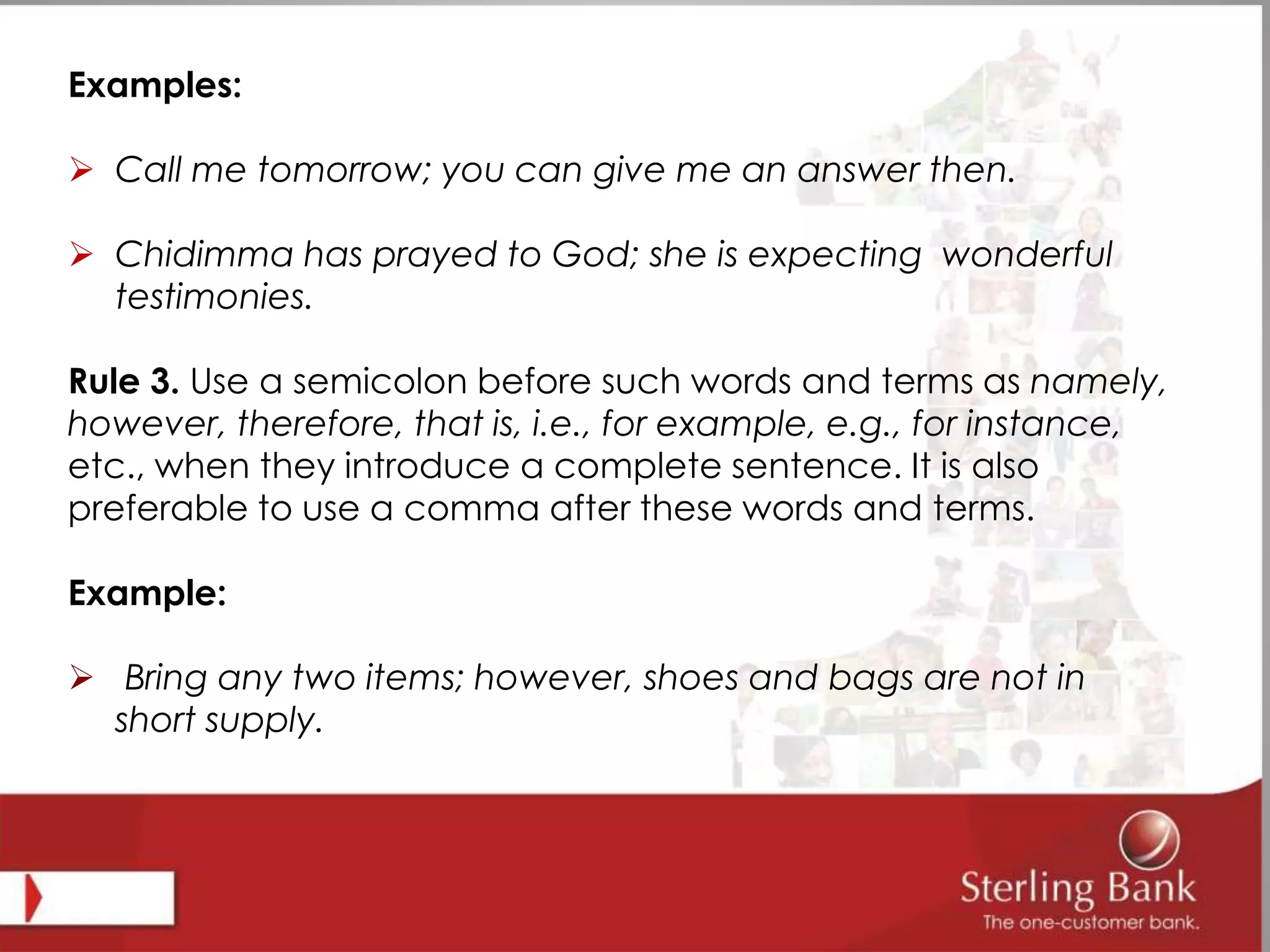
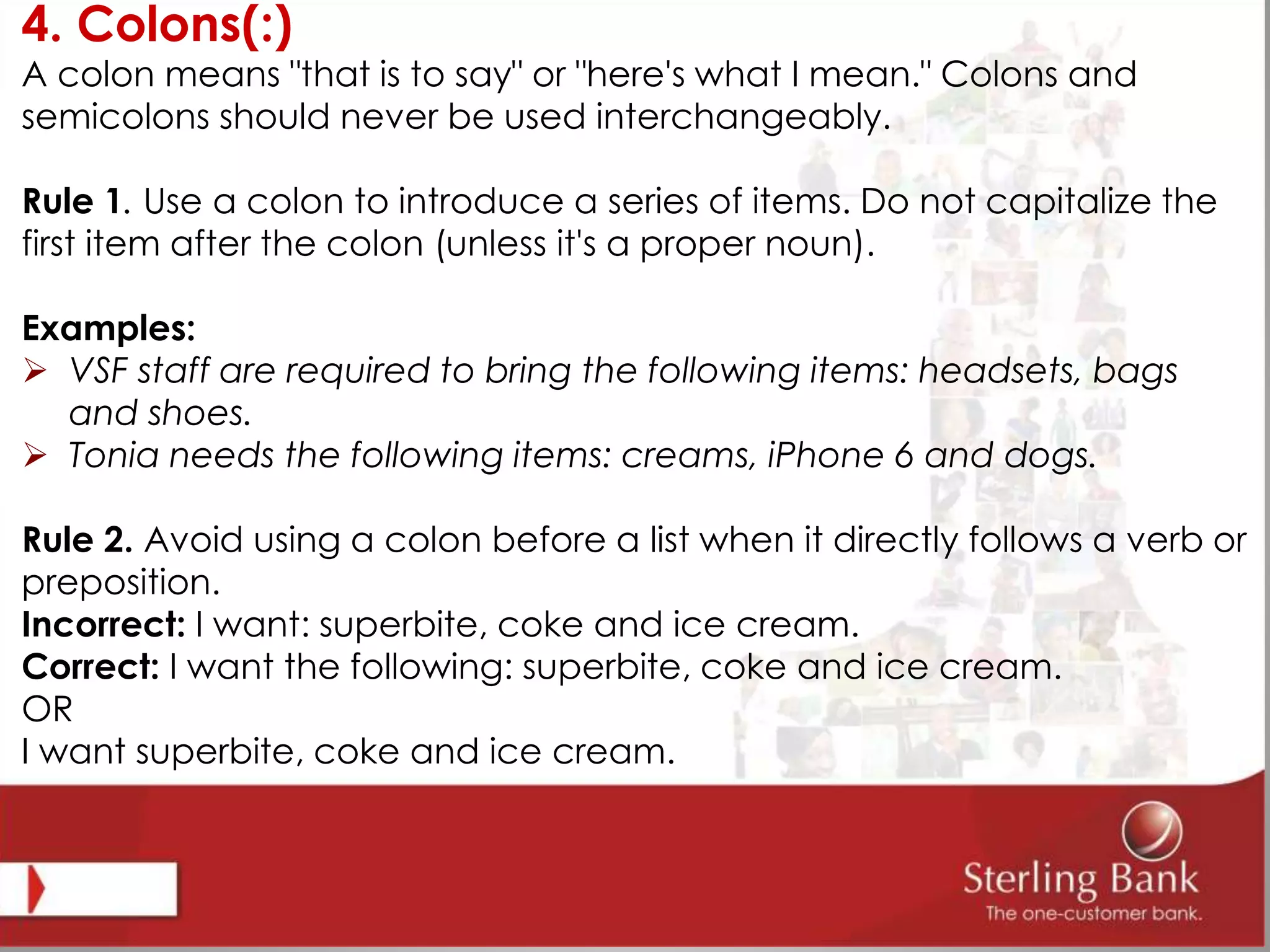
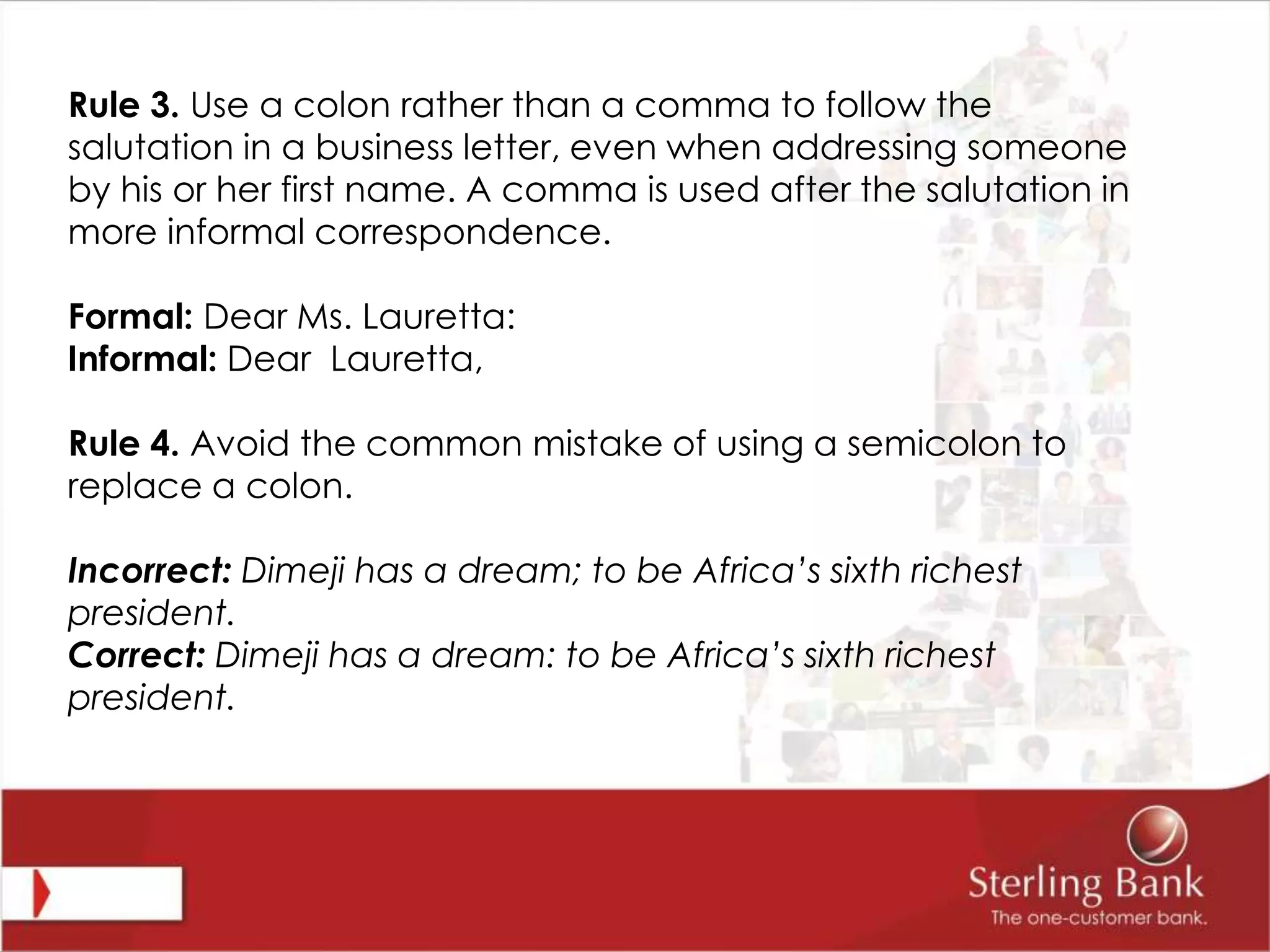
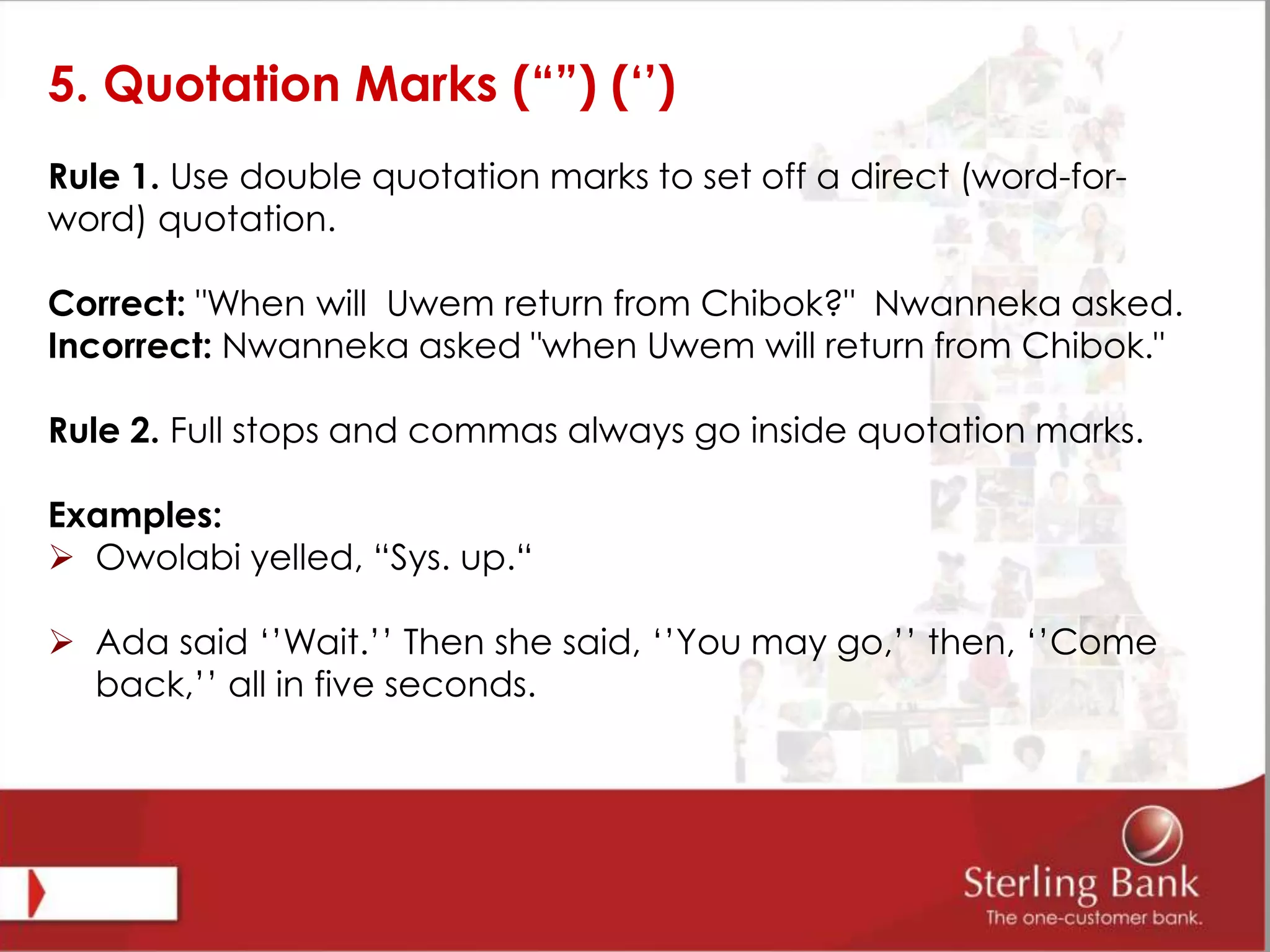
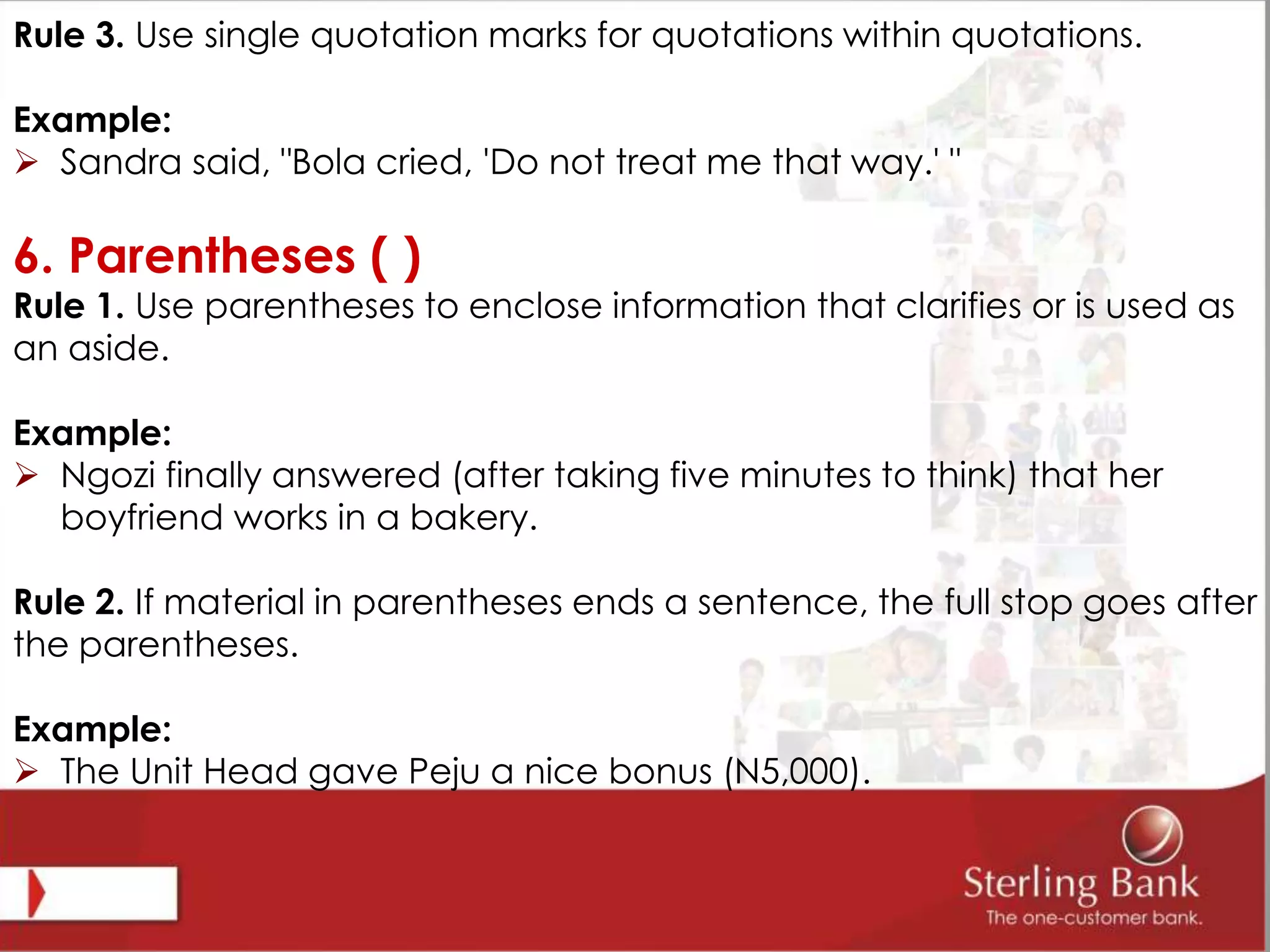
![• The use of parentheses indicates that the writer considered the
information less important—almost an afterthought.
Rule 3. The full stop goes inside parentheses only if an entire sentence is
inside the parentheses.
Example:
Please read Shina’s essay(You'll be amazed.)
7. Brackets [ ]
Brackets are far less common than parentheses, and they are only used
in special cases. Brackets (like single quotation marks) are used
exclusively within quoted material.
Rule 1. Brackets are interruptions. They are used to explain or comment
on the quotation.](https://image.slidesharecdn.com/f8cbcd92-aac0-4d07-ac6b-e61ecb40a18d-151004205707-lva1-app6892/75/Basic-Rules-Of-English-Grammar-13-2048.jpg)
![Example:
Seun said, “Lilian was on vacation with [her boyfriend] Suleiman.”
Rule 2. When quoting something that has a spelling or grammar
mistake or presents material in a confusing way, insert the term sic in
italics.
Sic means "This is exactly what the original material says."
Example:
Efosa wrote, “Bukky would rather die then [sic] see a lady hugging
Sholape."
The [sic] indicates that then was mistakenly used instead of than.](https://image.slidesharecdn.com/f8cbcd92-aac0-4d07-ac6b-e61ecb40a18d-151004205707-lva1-app6892/75/Basic-Rules-Of-English-Grammar-14-2048.jpg)
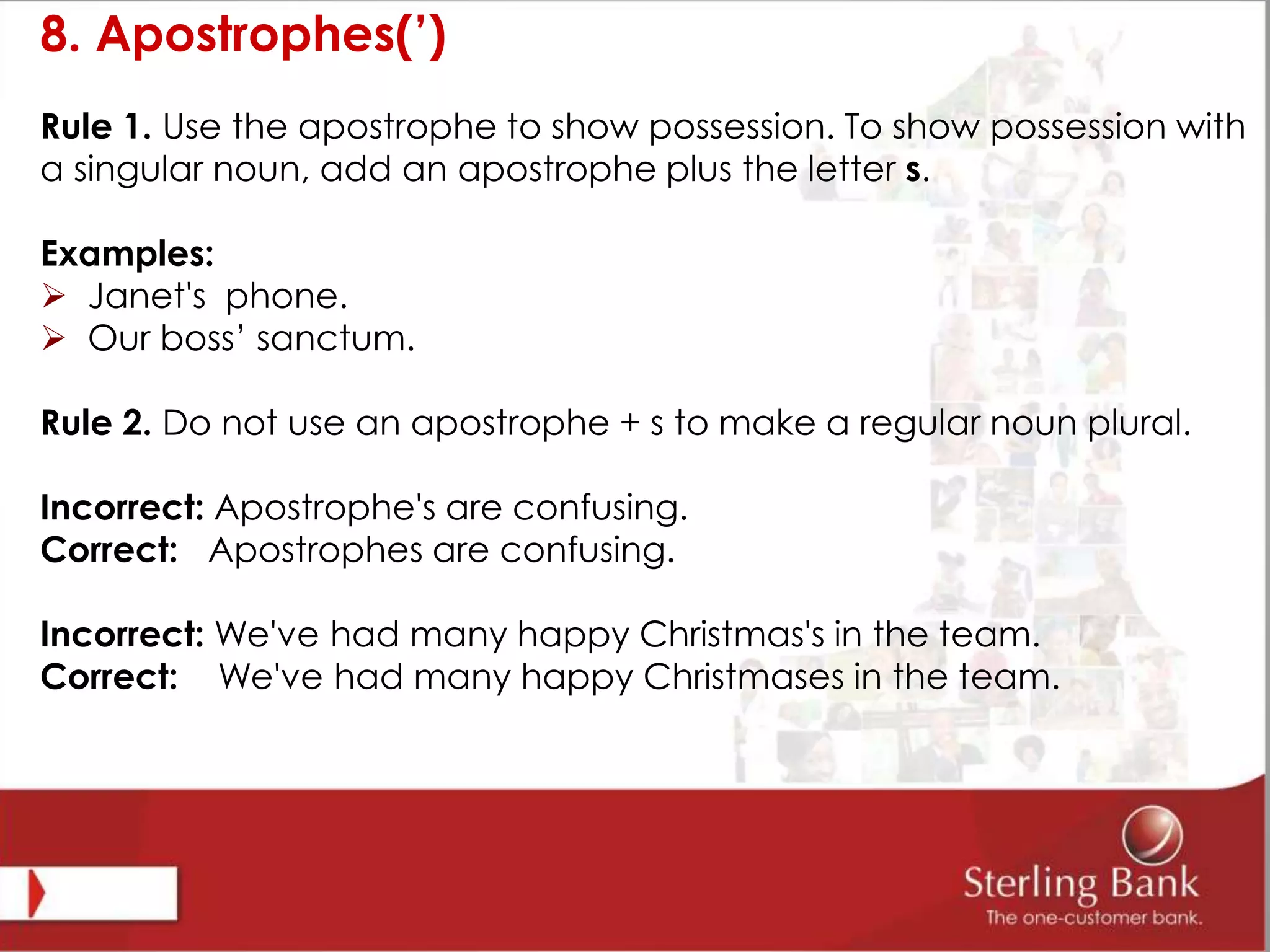
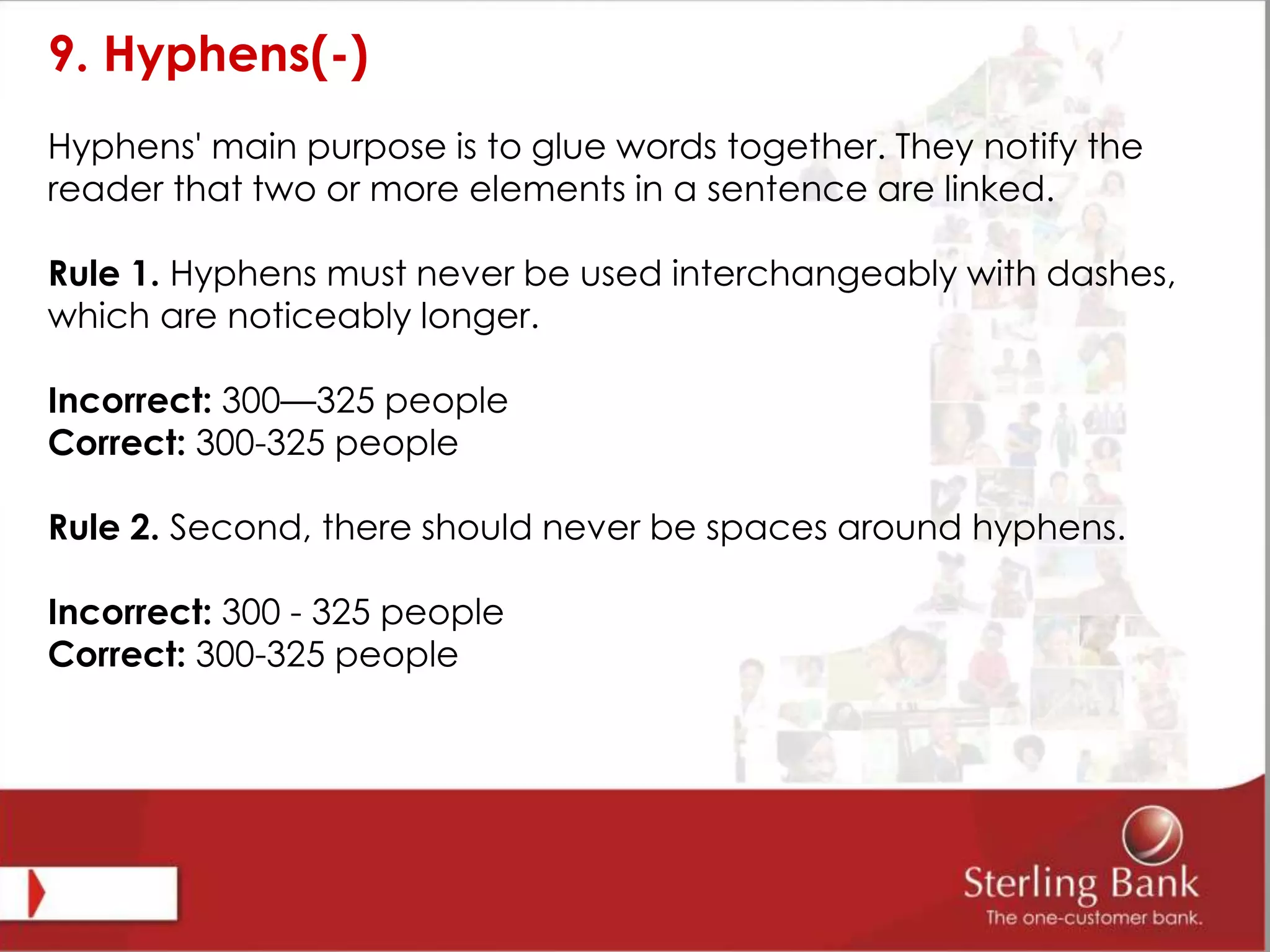

![A common way to delete the beginning of a sentence is to follow the
opening quotation mark with an ellipsis, plus a bracketed capital letter:
Example:
"…[A]fter hours of careful thought, Tobi agreed to marry Desmond.“
Rule 3. Ellipses can express hesitation, changes of mood, suspense, or
thoughts trailing off. It can also be used to indicate a pause or wavering
in a sentence.
Examples:
I don't know…I'm not sure.
Bisola said, "I…really don't…know how to use an ATM card."](https://image.slidesharecdn.com/f8cbcd92-aac0-4d07-ac6b-e61ecb40a18d-151004205707-lva1-app6892/75/Basic-Rules-Of-English-Grammar-18-2048.jpg)


